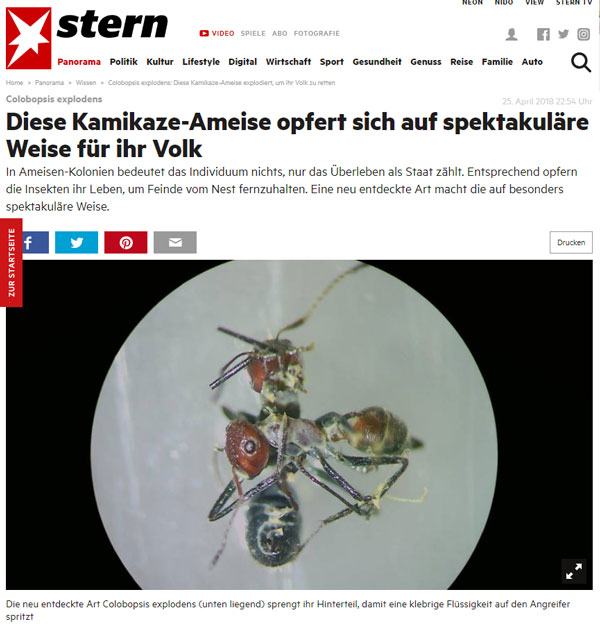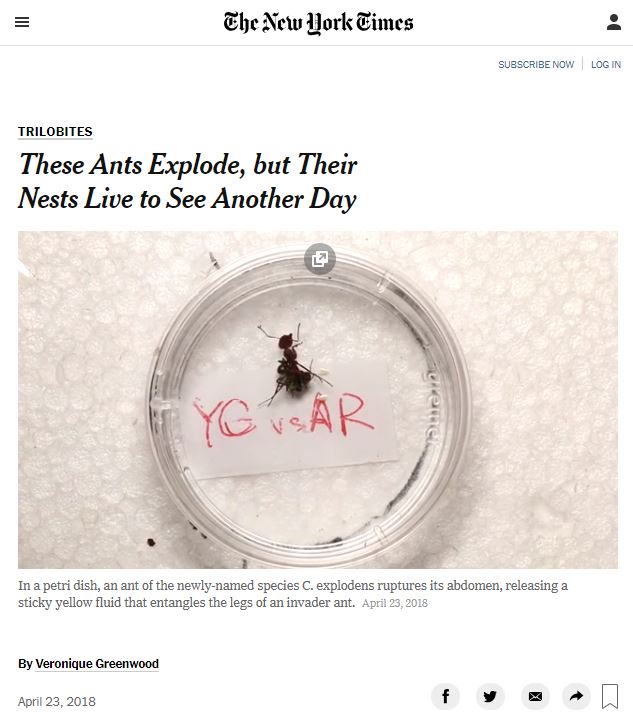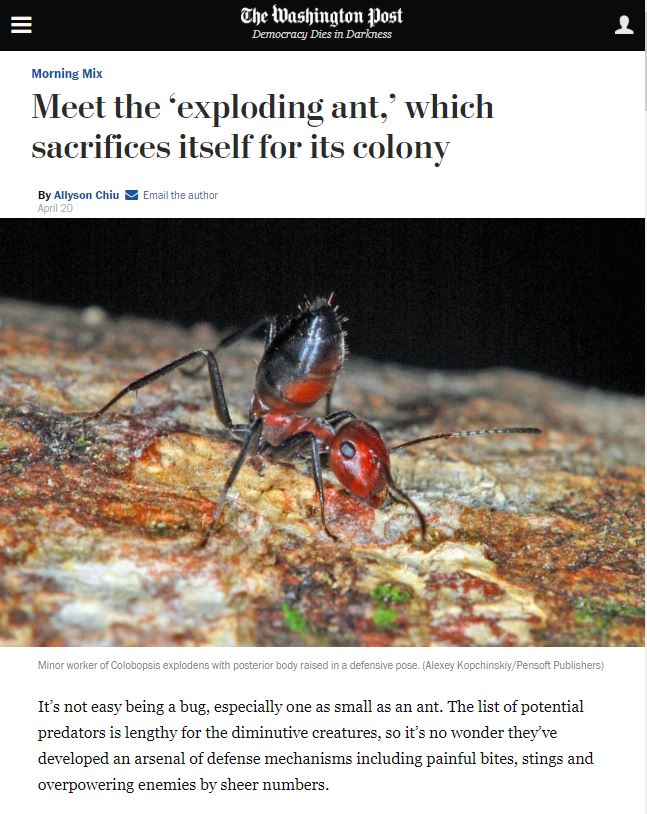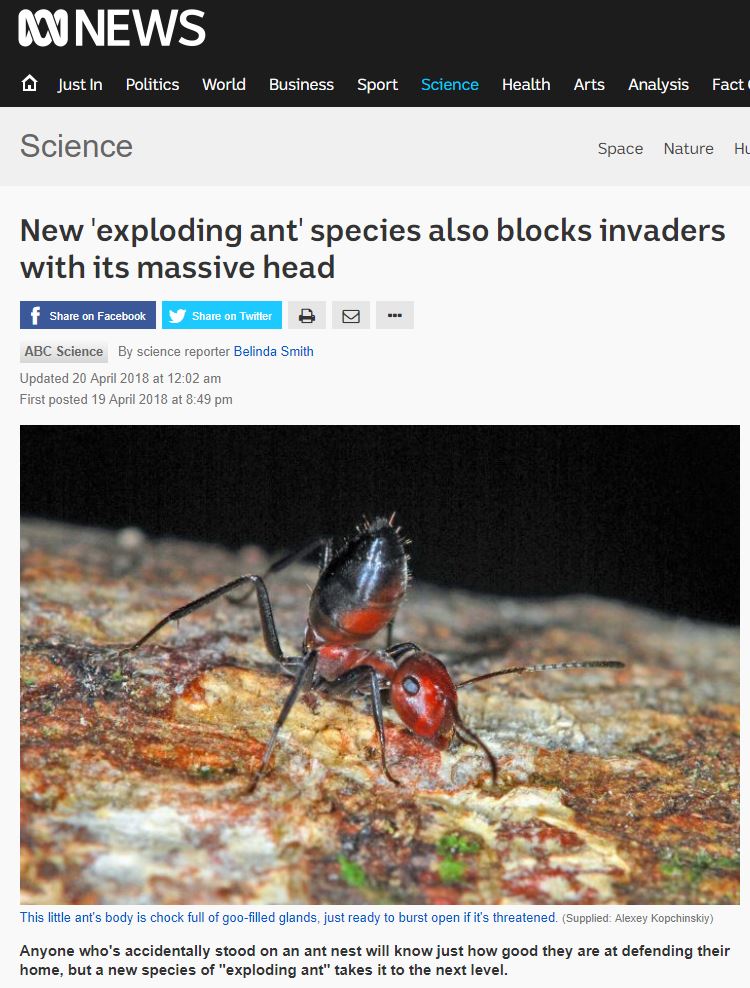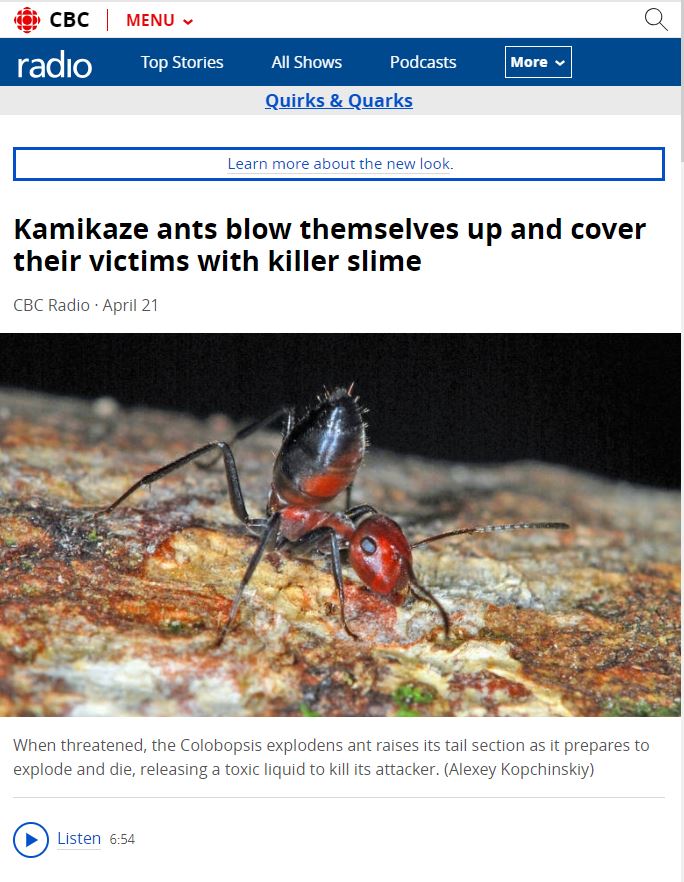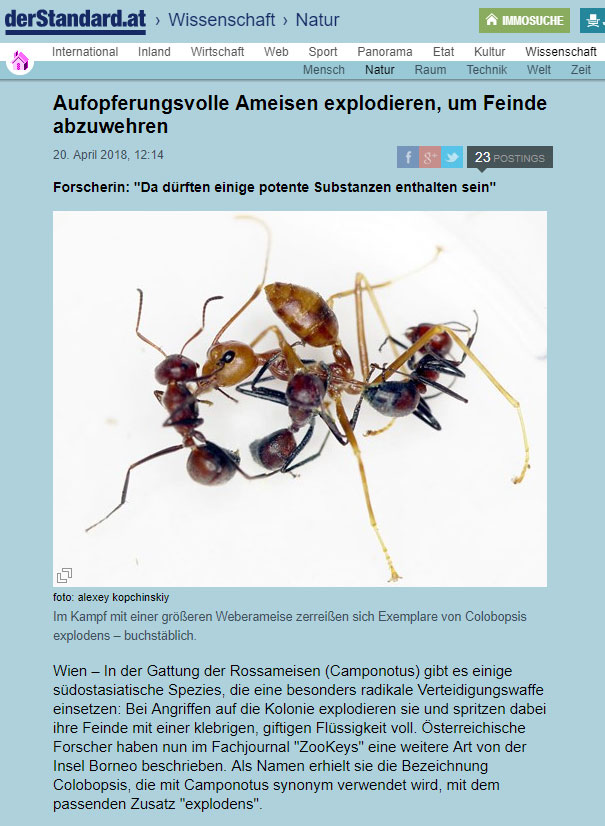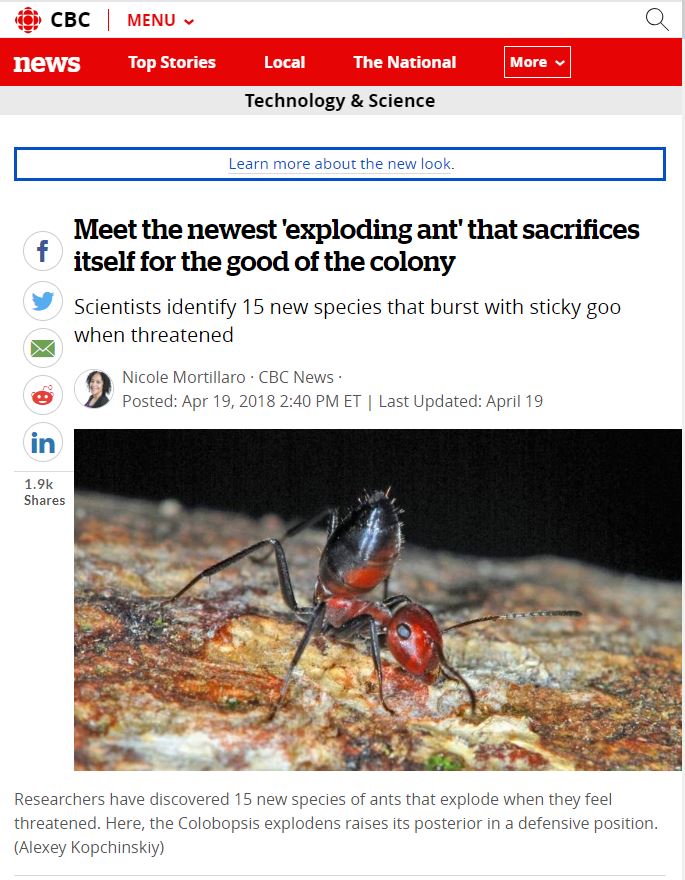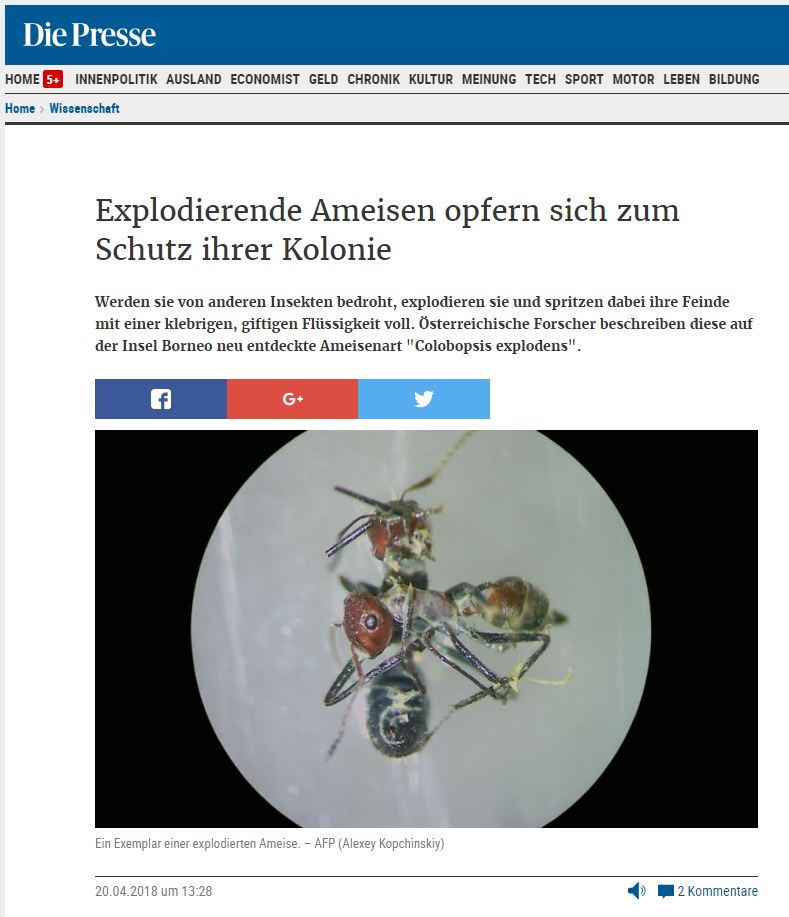In Ameisen-Kolonien bedeutet das Individuum nichts, nur das Überleben als Staat zählt. Entsprechend opfern die Insekten ihr Leben, um Feinde vom Nest fernzuhalten. Eine neu entdeckte Art macht die auf besonders spektakuläre Weise.
Forscher haben im Kleinstaat Brunei auf der Insel Borneo eine neue Ameisenart entdeckt, die sich bei Gefahr zur Explosion bringt. Die Kamikaze-Ameise mit dem wissenschaftlichen Namen Colobopsis explodens explodiert, während sie eine klebrige, giftige Flüssigkeit ausstößt, um einen Feind abzuwehren.
Outside the kitchen door at the Kuala Belalong Field Studies Center in Brunei, on a number of trees near the balcony, there is a nest of very special ants.
They explode.
This colony was studied in depth by scientists who, last week in the journal ZooKeys, published an in-depth description of the newly named species, called Colobopsis explodens, including a portion of their genome sequence.
Workers of C. explodens have a distinctive, rather foul talent. When their nest is invaded, they rupture their own abdomens, releasing a sticky, bright yellow fluid laced with toxins on their attackers. Similar to honey bees that die after stinging, the exploded ants do not survive, but their sacrifice can help save the colony.
It’s not easy being a bug, especially one as small as an ant. The list of potential predators is lengthy for the diminutive creatures, so it’s no wonder they’ve developed an arsenal of defense mechanisms including painful bites, stings and overpowering enemies by sheer numbers.
But one newly discovered ant species goes above and beyond when it senses danger. It explodes — killing itself — and coats adversaries in a toxic yellow goo, the ultimate act of self-sacrifice to protect its colony.
These valiant ants are the newest addition to the species group Colobopsis cylindrica, more colloquially known as “the exploding ants,” according to a detailed survey of the insects published Thursday in ZooKeys, a peer-reviewed open access scientific journal. Found in the jungles of Southeast Asia, the tree-dwelling ants were called “Yellow Goo” before researchers aptly named them Colobopsis explodens, Alice Laciny, the article’s lead author, told The Washington Post. They are the first new species of exploding ant to be discovered since 1935, Laciny said.
The suicidal ant C. Explodens blows itself up when attacked, spraying victims with toxic glue that binds them together forever more.
They say the only animal to commit suicide is Homo sapiens, since that whole thing about lemmings casting themselves off cliffs en masse is hooey. But it turns out there are multiple species of ants who live peacefully in Southeast Asian treetops, unless something threatens their colony. Then they blow themselves up.
Until recently, science had failed to distinguish between several of these species. Now a new study headed by Dr. Alice Laciny of the Vienna Natural Museum has not only contributed to that, but identified a particularly dedicated member of the tribe in the forest canopies of Borneo, Thailand and Malaysia.
In fact these ants were described as early as 1798, though early entomologists didn’t realize they would commit explosive suicide when provoked. Their kamikaze bent has been known for a century after being discovered in the middle of World War I. "The exploding behavior was first observed in 1916 by German entomologist Hugo Viehmeyer (apparently a war was not enough to distract him from his research)," Laciny tells Haaretz.
In Austrialian ABC News:
Anyone who's accidentally stood on an ant nest will know just how good they are at defending their home, but a new species of "exploding ant" takes it to the next level.
When confronted by an enemy insect, these tree-dwellers latch onto their foe, tear open their own body wall and release yellow toxic goo onto their rival, slowing or killing it.
And while this "explosion" doesn't exactly blow them to bits, it also spells the end for the defending ant, said Alice Laciny, a PhD student at the Natural History Museum in Vienna.
She and her colleagues discovered the new species, dubbed Colobopsis explodens, in the rainforests of Borneo and their findings were published today in the journal ZooKeys.
The ant - called Colobopsis explodens - as aptly named because when it is threatened, it explodes in an act of self-sacrifice, and releases a toxic goo that also kills the attacker. They are found all over southeast Asia, including Borneo, where the study, led by Alice Laciny from the Natural History Museum in Vienna, Austria, took place. These ants live in the canopy of the rain forest where they are often as high up in the trees as 50 to 60 metres. There are 15 known species in this group that have this ability to explode.
Forscherin: "Da dürften einige potente Substanzen enthalten sein" - derstandard.at/2000078322279/Aufopferungsvolle-Ameisen-explodieren-um-Feinde-abzuwehren.
Wien – In der Gattung der Rossameisen (Camponotus) gibt es einige südostasiatische Spezies, die eine besonders radikale Verteidigungswaffe einsetzen: Bei Angriffen auf die Kolonie explodieren sie und spritzen dabei ihre Feinde mit einer klebrigen, giftigen Flüssigkeit voll. Österreichische Forscher haben nun im Fachjournal "ZooKeys" eine weitere Art von der Insel Borneo beschrieben. Als Namen erhielt sie die Bezeichnung Colobopsis, die mit Camponotus synonym verwendet wird, mit dem passenden Zusatz "explodens". - derstandard.at/2000078322279/Aufopferungsvolle-Ameisen-explodieren-um-Feinde-abzuwehren




